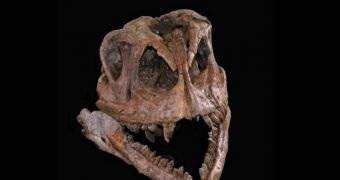A team of scientists including Sankar Chatterjee of Texas Tech University, found the first complete skeleton of an ancestor of the largest land animals that ever lived – the sauropod dinosaurs, in China.
The species is called Yizhousaurus sunae, it lived in the Yunnan Province in South China, some 200 million years ago, and it finally helps scientists understand how the long-necked sauropod dinosaurs evolved.
The fossils have been found in the same location in which, 50 years ago, several specimens of prosauropod dinosaurs such as Lufengosaurus were discovered.
Most paleontologists suspected that the two species are connected, because sauropods are believed to have evolved from prosauropods, but they did not have much information on the transition, at least until now.
Chatterjee said that “this new one (Yizhousaurus), may bridge this gap,” and give more information of the transformation.
The Yizhousaurus was not as massive as the sauropod giants, who measured 120 feet in length and weighted 100 tons, but even if it was only 30 feet long, it started showing the signs of later sauropods: the beginning of a long neck, a vigorous skeleton and four-legged posture.
Another thing that eased the paleontologists' work of placing this dinosaur at its rightful place in history was the fact that its skull was fossilized intact (a rather rare phenomenon).
Chatterjee explained that “sauropods have these big bones but their skulls are very lightly constructed and also very small.”
Unlike them, Yizhousaurus's skull is wide, high and domed, under one foot long with a short snout, and eye sockets on the sides for scanning enemies.
Its U-shapped jaw is quite unusual and it looks like that of a Camarasaurus, according to Chatterjee.
The sauropod's ancestor had many notched and spoon-shaped teeth of the upper and lower jaws, that allowed it to cut plant material during feeding.
The strong teeth and raised neck allowed the animal to easily seize small branches from treetops and then chew the plant material.
“Once the plant food was ingested, a gastric mill in the stomach probably provided further mechanical breakdown of the plant,” explained Chatterjee.
This new discovery will be presented at the annual meeting of the Geological Society of America in Denver, on October 31.

 14 DAY TRIAL //
14 DAY TRIAL //